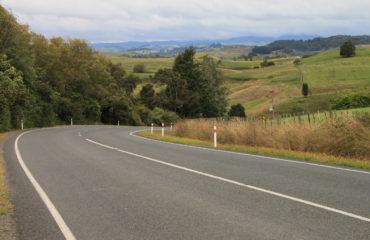10 Tips for Train Crossing Safety
With approximately 140,000 miles of railway tracks in the U.S., we are at some point going to cross train tracks, whether it is in a car or as a pedestrian. When it is done on a daily basis, it may even become commonplace, but what is never commonplace is the potential risk.
My parents live in a town where trains go through on a daily basis at a variety of times. Last fall, I was home for a visit, and heard from my parents how a train recently hit a local man when he tried to cross the train tracks. There were indications that he had been drinking and then tried to “beat” the train. He lost that race.
Unfortunately, in the United States and elsewhere this is not an isolated event. In the U.S., a train hits a vehicle or a person every three hours. While a dramatic improvement from the 12,000 train-vehicle collisions in 1972, there were still 2,087 train-vehicle collisions in 2013. That is 2,087 too many.
Did You Know?
Trying to beat a train can be deadly.
- 1193 people were injured or killed at railroad grade crossings, up 1.5 percent from 1175 in 2012.
- 908 pedestrians were injured or killed while walking on or near railroad tracks in 2013, up 7.7 percent from 843 in 2012.
- More than 50 percent of the people who die while walking on railroad tracks have alcohol or drugs in their system.
- 95 percent of all rail-related deaths involve drivers trying to beat a train, or people trespassing on railroad tracks.
With 95 percent of these crashes due to human error trying to beat a train or trespassing, reducing the number of fatalities even further is very possible. One organization in particular that is focused on reducing fatalities and injuries around train tracks is Operation Lifesaver. With a national network of volunteers, Operation Lifesaver is spreading the word on keeping people safe around the tracks and railway crossings.
Tips for Safety
Operation Lifesaver has put together a number of common sense tips when you are driving or walking where train tracks are located. Here are a few when you are driving:
- Trains and cars don’t mix. Never race a train to the crossing — even if you tie, you lose.
- The train you see is closer and faster-moving than you think. If you see a train approaching, wait for it to go by before you proceed across the tracks.
- Be aware that trains cannot stop quickly. Even if the locomotive engineer sees you, a freight train moving at 55 miles per hour can take a mile or more to stop once the emergency brakes are applied. That’s equal to 18 football fields!
- Never drive around lowered gates — it’s illegal and deadly. If you suspect a signal is malfunctioning, call the 1-800 number posted on or near the crossing signal or your local law enforcement agency.
- Do not get trapped on the tracks; proceed through a highway-rail grade crossing only if you are sure you can completely clear the crossing without stopping.
There are also tips specifically for pedestrians. Here are a few of those:
- The only safe place to cross is at a designated public crossing with either a crosswalk, flashing red lights or a gate. Cross tracks ONLY at designated pedestrian or roadway crossings.
- Railroad tracks, trestles, yards and equipment are private property and trespassers are subject to arrest and fine.
- Trains overhang the tracks by at least three feet in both directions; loose straps hanging from rail cars may extend even further. If you are in the right-of-way next to the tracks, the train can still hit you.
- Flashing red lights indicate a train is approaching from either direction. Never walk around or behind lowered gates at a crossing, and DO NOT cross the tracks until the lights have stopped flashing and it’s safe to do so.
- Do not cross the tracks immediately after a train passes. A second train might be blocked by the first. Trains can come from either direction. Wait until you can see clearly around the first train in both directions.
 See Tracks? Think Train!
See Tracks? Think Train!
The latest educational effort by Operation LifeSaver is See Tracks? Think Train! The message is designed to have a pedestrian or driver focus on safety when near train tracks. See Tracks? Think Train! uses a comprehensive campaign of radio, television, print and billboards to educate drivers and pedestrians and encourage them to use caution when approaching trains. It is a reminder that we all need to remain alert to our surroundings near the tracks. Most trains today are freight trains and they do not follow set schedules, so when you see tracks, always expect a train, and then act accordingly.
For more information on train safety, check out the Operation Lifesaver website or the Federal Railroad Administration. Below, you can watch one of the See Tracks? Think Train! PSAs.
Man vs. Train







